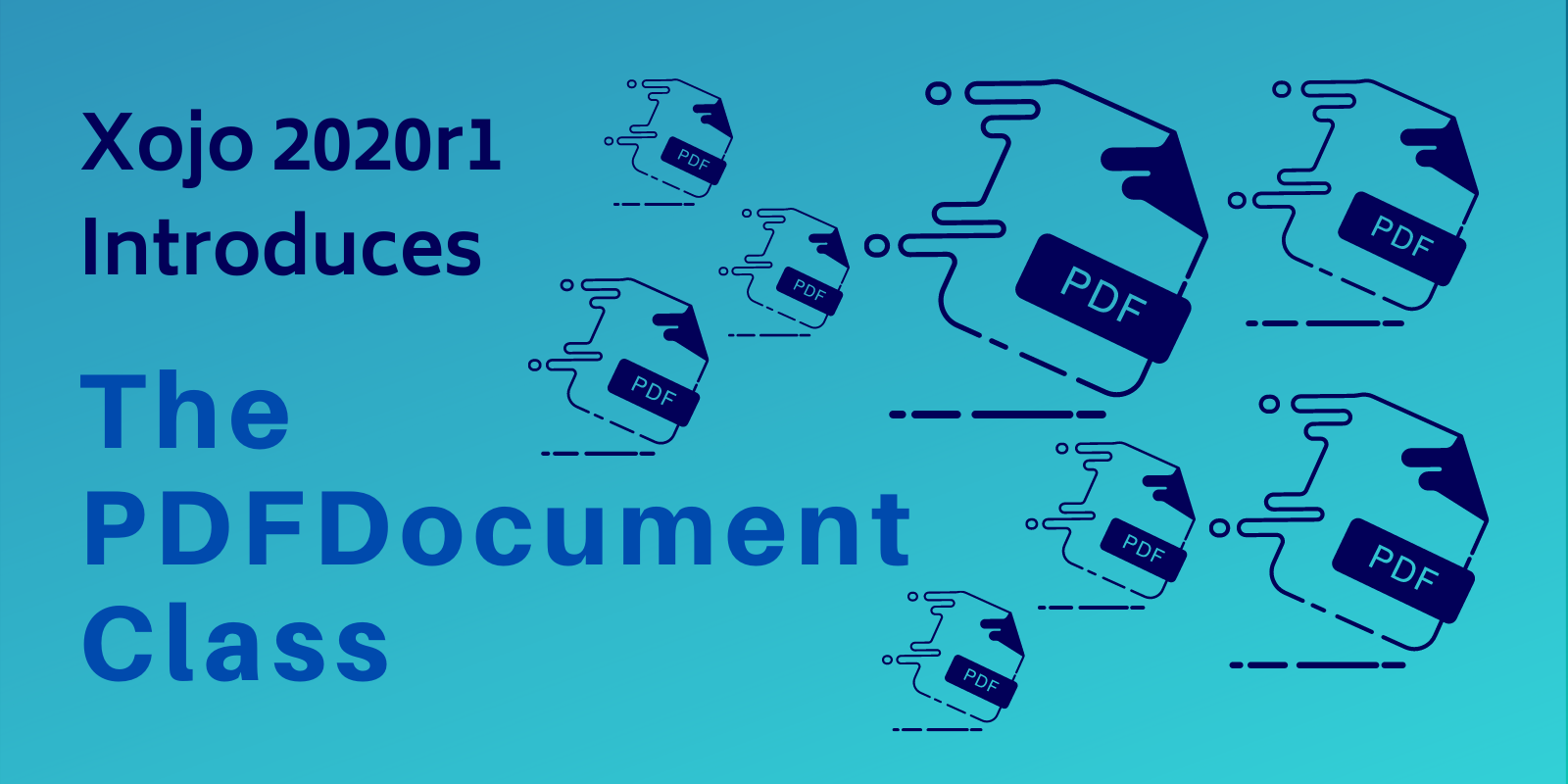Xojo 2020r1 brings a highly requested feature to the Xojo IDE: the ability to create PDF documents from code! Now you can use the already familiar methods in Xojo’s Graphics class to create Standard PDF 1.4 documents with the PDFDocument class.
Comments closedCategory: Desktop
mac windows and linux
On the forum a user asked if there was a way to create a rectangle with only the top left and top right corners being rounded. Xojo’s built-in RoundRectangle control draws with all four corners rounded, so that was not an option.
One solution is to use a GraphicsPath to draw exactly what you want. With a GraphicsPath you can use the AddArc() method to add rounded corners and then draw the lines for the rest of the rectangle.
Comments closedThe Xojo Web Framework offers the WebLink class ready to use which handles showing the text with the proper visuals and the opening of the underlying URL in the browser. But if you need to have that feature on Desktop, it’s not that hard! Continue reading so I can show you one possible implementations to create your own LinkLabel class on Desktop.
Comments closedIn Xojo there is a new class, GraphicsPath, that you can use to create graphics as a mathematical description of shapes and lines; ranging from simple lines to Bézier curves, arcs, rectangles, there are many advantages to using these! For example, as a class on its own, it doesn’t even needs a graphical context (Graphics) in order to describe the shapes you want to use, and the mathematical representation means more control and precision. Simply put, you only need to join the points!
Comments closedThis tutorial will show you how to deploy your SQLite based projects so they behave right on Desktop, Web and iOS, copying the database file to the right place on every target.
Comments closedToday we are pleased to announce the winners of the 2020 Xojo Design Awards. Judging is never an easy job, but this year the submissions were such a diverse range of apps we found it both exciting and difficult! The Design Awards honor excellence in software design. These awards are a great opportunity to learn about some of the best apps made with Xojo. Support Xojo and the Xojo community by sharing and congratulating these winners!
Comments closedXojo 2019R2 has a lot of new features and enhancements, including the simplification of updating the User Interface in apps from threads running in combination with the main app thread. Doing that in previous releases required the use of a thread in combination with a Timer, for example.
Comments closedHow to save pictures in a database is without doubt one of the more frequent questions I’m asked about. I hear this from Xojo newcomers,…
Comments closedFor more years than I’d like to admit, the Layout Editor has been slow in terms of dragging controls around. As you add more controls, it gets worse. For web layouts, it’s been even worse. That’s primarily because we have to draw everything for a web layout whereas for a desktop layout, the OS draws the controls for us.
In an engineering meeting, I mentioned a discussion I had with a user about the speed of the Layout Editor and Travis said he had recently been reminded of how slow it was too. While most of the time issues in Xojo are carefully calculated and prioritized for maximum bang for the buck (as we say around here), that’s not always how it happens. After the meeting, Travis decided to dive into the Layout Editor code and see what could be done to speed it up.
The results are pretty remarkable.
Comments closedTo help developers check if their software is ready for 64-bit, Apple added a new tool for developers in Xcode 9. With this tool, you can force macOS to run as “64-bit only” to see if your software is ready for a 64-bit only environment.
Comments closed
